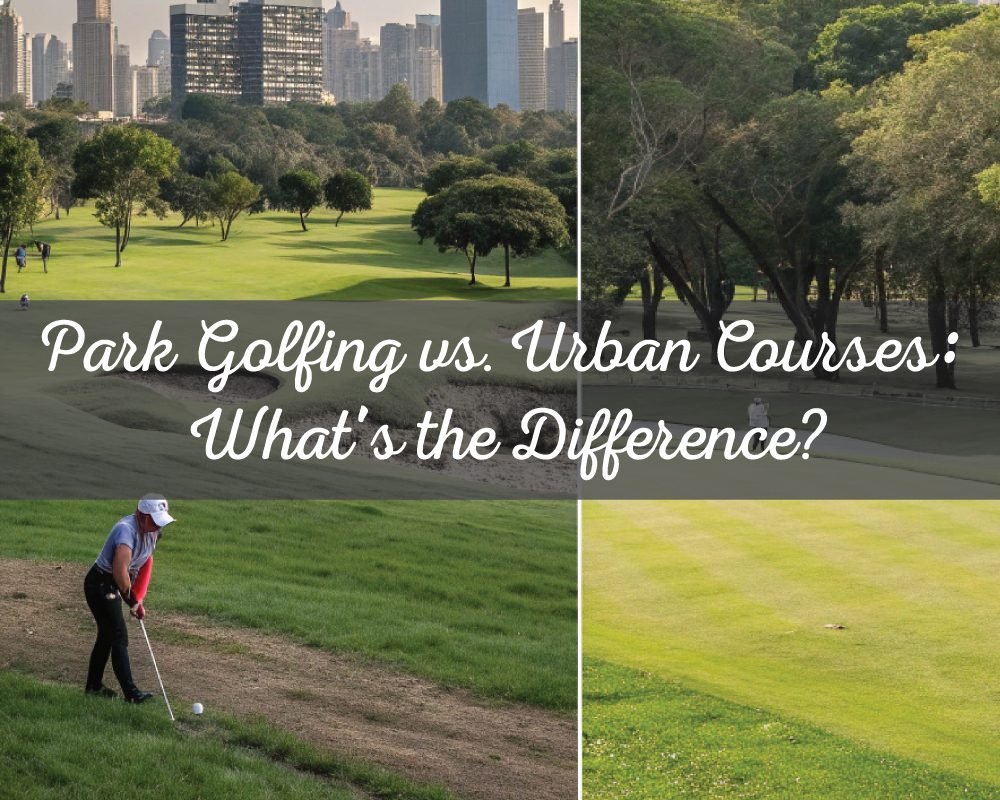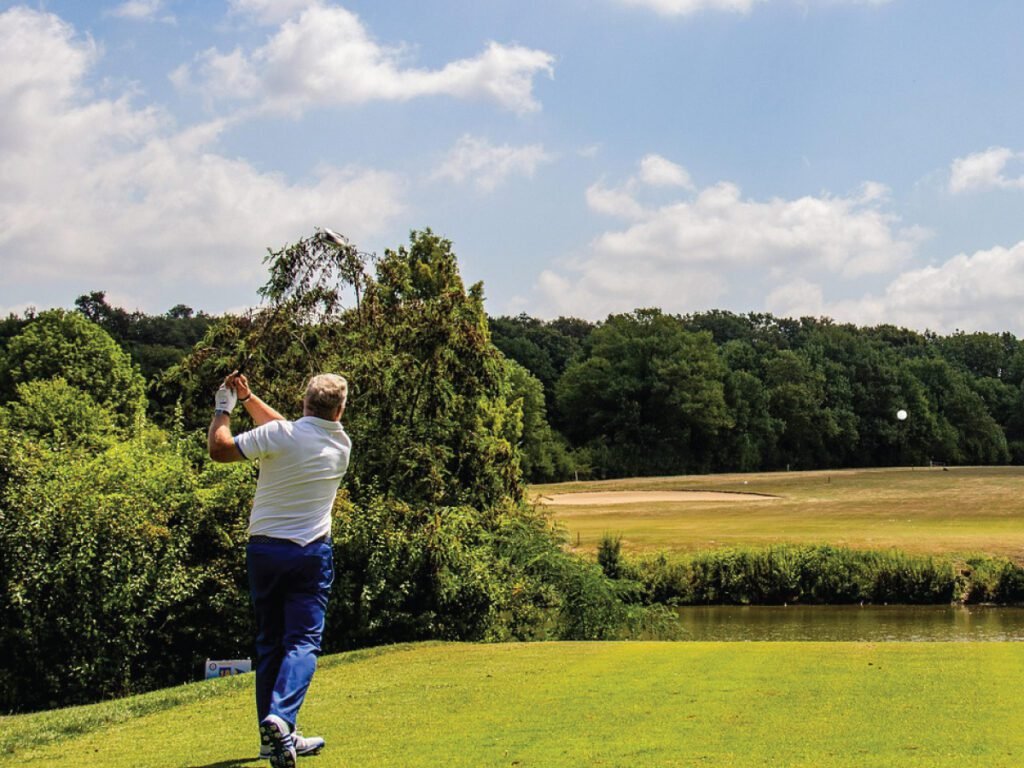
Table of Contents
Explore the key differences between park golfing and urban courses. Discover which golf experience suits your style, from natural landscapes to city convenience, with tips, benefits, and insider insights.
Introduction
Golf is a sport enjoyed in a wide variety of settings, each offering its own unique experience. Two of the most popular types of courses are park golfing and urban courses. While both allow players to practice and improve their game, the environment, layout, and amenities can differ significantly. Understanding the differences between these options can help golfers make informed choices about where to play. Whether you prefer a peaceful retreat surrounded by nature or the convenience of city proximity, each type of course offers distinct advantages. This article will explore the nuances of Park Golfing vs Urban Courses, helping you choose the experience that best suits your needs.
Golfers often ask whether one course type is better than the other, but the answer depends largely on personal preference, lifestyle, and goals. Some players prioritize tranquility and scenery, while others value accessibility and modern facilities. Knowing what to expect from each type of course ensures a more enjoyable and fulfilling game, whether you are a beginner or an experienced golfer.
Park Golfing
What is Park Golfing
Park golfing typically occurs in open green spaces designed to blend with natural landscapes. These courses are often located within parks, forests, or rural settings, creating a serene environment. The design emphasizes natural terrain, including hills, trees, water hazards, and winding fairways. The goal is to create a challenging yet visually appealing course that encourages players to engage with nature as they play.
Park golf courses usually cover larger areas, providing longer holes and more walking distance. The terrain often varies, with natural undulations, slopes, and obstacles that require careful strategy. For golfers who enjoy taking their time and absorbing the surroundings, park courses offer a relaxing, immersive experience.

Photo by Karol Chomka on Unsplash
Benefits of Park Golfing
The primary benefits of park golfing are tied to both physical and mental well-being. Being outdoors in natural surroundings can reduce stress, boost mental clarity, and increase enjoyment of the game. Wide-open spaces allow for a leisurely pace without feeling crowded.
Another advantage is the exercise aspect. Walking longer distances, navigating hills, and swinging in varied conditions provide an excellent full-body workout. Golfers also benefit from fresh air and exposure to sunlight, which can enhance overall health.
Features of Park Golfing
Park courses are distinct because of their naturalistic features. Common elements include:
- Trees and forested areas that create shade and obstacles
- Lakes, ponds, or streams incorporated into course design
- Rolling hills that test strength and accuracy
- Expansive fairways for long drives
- Minimal urban noise for a peaceful ambiance
Tips for Park Golfing
To make the most of your park golfing experience, consider the following tips:
- Wear shoes suitable for uneven terrain to prevent slips and fatigue
- Carry water and light snacks, as park courses may not have many facilities
- Plan extra time for walking, especially on larger courses
- Observe wildlife and respect the natural environment
Common Mistakes in Park Golfing
Golfers new to park courses often make mistakes that can affect their enjoyment:
- Underestimating slopes, wind, and natural obstacles
- Ignoring park rules and course etiquette
- Failing to bring appropriate gear for longer distances
- Rushing through the game and missing the scenic experience
Transitioning from park golfing to urban courses, players often notice a dramatic change in pace, accessibility, and overall atmosphere.
Urban Courses
What are Urban Courses
Urban golf courses are typically located within or near city limits, designed to maximize convenience and accessibility. These courses often occupy smaller plots of land than park courses and may include artificial landscaping or creative layouts to make up for limited space. Urban courses are ideal for city residents who want to play without traveling long distances, offering a quick and efficient golfing experience.
These courses often focus on shorter holes and compact fairways, emphasizing precision over long-distance driving. Artificial features such as sand traps, water hazards, and landscaped areas simulate natural challenges in a smaller space. Urban courses also tend to offer modern amenities that enhance comfort and convenience.
Benefits of Urban Courses
The main advantages of urban courses include accessibility, convenience, and social opportunities. Golfers can easily schedule quick rounds before or after work, or on weekends, without dedicating an entire day to travel. Urban courses usually feature well-maintained facilities, including clubhouses, restaurants, pro shops, and practice areas, making them a practical choice for busy players.
Social interaction is another benefit. Urban courses often attract a wide range of players, creating opportunities for networking, group play, and community engagement. Players can also easily participate in tournaments or social events hosted at city courses.
Features of Urban Courses
Urban courses often include features such as:
- Shorter fairways and compact layouts
- Artificial hazards to simulate natural challenges
- Close proximity to city amenities and transportation
- Clubhouses with food, drinks, and equipment rental options

Tips for Urban Courses
To enjoy urban golfing fully, keep these tips in mind:
- Book tee times in advance to avoid crowds
- Use practice areas to hone specific skills
- Dress appropriately for city course rules and etiquette
- Utilize GPS or apps to navigate tight layouts efficiently
Common Mistakes in Urban Courses
Common mistakes include:
- Assuming the shorter layout makes the course easy
- Ignoring noise and distractions from the surrounding city
- Overlooking the need to follow strict timing and booking rules
- Neglecting available warm-up and practice facilities
Moving from urban courses back to park golfing, golfers often appreciate the contrast between natural and artificial elements, along with the pace of play and overall atmosphere.
Comparing Park Golfing and Urban Courses
Accessibility
Park courses often require travel to suburban or rural areas, while urban courses are convenient for city dwellers. Accessibility affects frequency of play and the overall experience.
Pace of Play
Park golfing encourages a leisurely pace, allowing players to enjoy nature and take more time per hole. Urban courses often promote faster play due to higher demand and tighter layouts.
Cost Considerations
Urban courses may charge higher fees due to location, maintenance, and amenities. Park courses may be more affordable, though they often lack facilities like restaurants or rental shops.
Environmental Experience
Park courses immerse players in natural surroundings with fresh air, wildlife, and scenic views. Urban courses offer a controlled environment with landscaped features and fewer natural elements.
Skill Requirements
Both course types challenge players differently. Park golfing requires adjusting to variable terrain and weather, while urban courses demand precision in compact spaces and strategic planning.
Transitioning between these environments can help golfers improve adaptability and refine different aspects of their game.
| Feature | Park Golfing | Urban Courses |
|---|---|---|
| Location | Countryside, parks, forests, natural landscapes | City or near urban areas, convenient access |
| Course Size | Larger areas, longer fairways, more walking | Compact layouts, shorter fairways, limited space |
| Pace of Play | Slower, leisurely, reflective | Faster, structured, efficient |
| Scenery | Natural, scenic, with trees, lakes, hills | Landscaped, controlled, minimal natural features |
| Facilities | Limited (few restaurants or rentals) | Clubhouses, restaurants, equipment rentals, practice areas |
| Cost | Often more affordable | Typically higher due to location and amenities |
| Skill Challenge | Natural terrain, slopes, weather conditions | Precision, tight spaces, strategic play |
| Accessibility | May require travel, less convenient | Easy access, close to city dwellers |
| Experience | Peaceful, nature-focused, relaxing | Social, convenient, modern, structured |
| Best For | Golfers seeking tranquility and scenic beauty | Golfers seeking quick rounds and modern amenities |
How to Choose the Right Course
Assess Your Priorities
Decide what matters most in your golfing experience. Do you seek tranquility and natural beauty, or convenience and modern amenities?
Evaluate Your Schedule
Urban courses suit tight schedules, allowing quick rounds before or after work. Park courses are ideal for full-day outings or extended practice sessions.
Consider Your Skill Level
Beginners may find urban courses easier to navigate, while advanced players can enjoy the varied challenges and unpredictability of park courses.
Test Both Options
If possible, try both course types. Personal experience often reveals subtle differences that guides and reviews may not capture, helping you determine which environment fits your style best.
Conclusion
Choosing between Park Golfing vs Urban Courses depends on your lifestyle, priorities, and goals. Park golfing offers a serene, nature-focused experience, ideal for relaxation and scenic enjoyment. Urban courses provide convenience, modern amenities, and social opportunities, perfect for busy city golfers.
Both types of courses offer unique benefits, and exploring each can enrich your golfing journey. By understanding the differences, features, and challenges, you can select the course that maximizes enjoyment, skill development, and overall satisfaction. Whether you prefer the calm of a park or the energy of a city course, knowing what to expect ensures that every round is memorable.
Also read our recent blog – Best Portable Gazebo for Camping and Park Adventures

Badhan is a passionate blogger, content writer, SEO expert, and graphic designer who helps brands grow through strategic content and creative design.